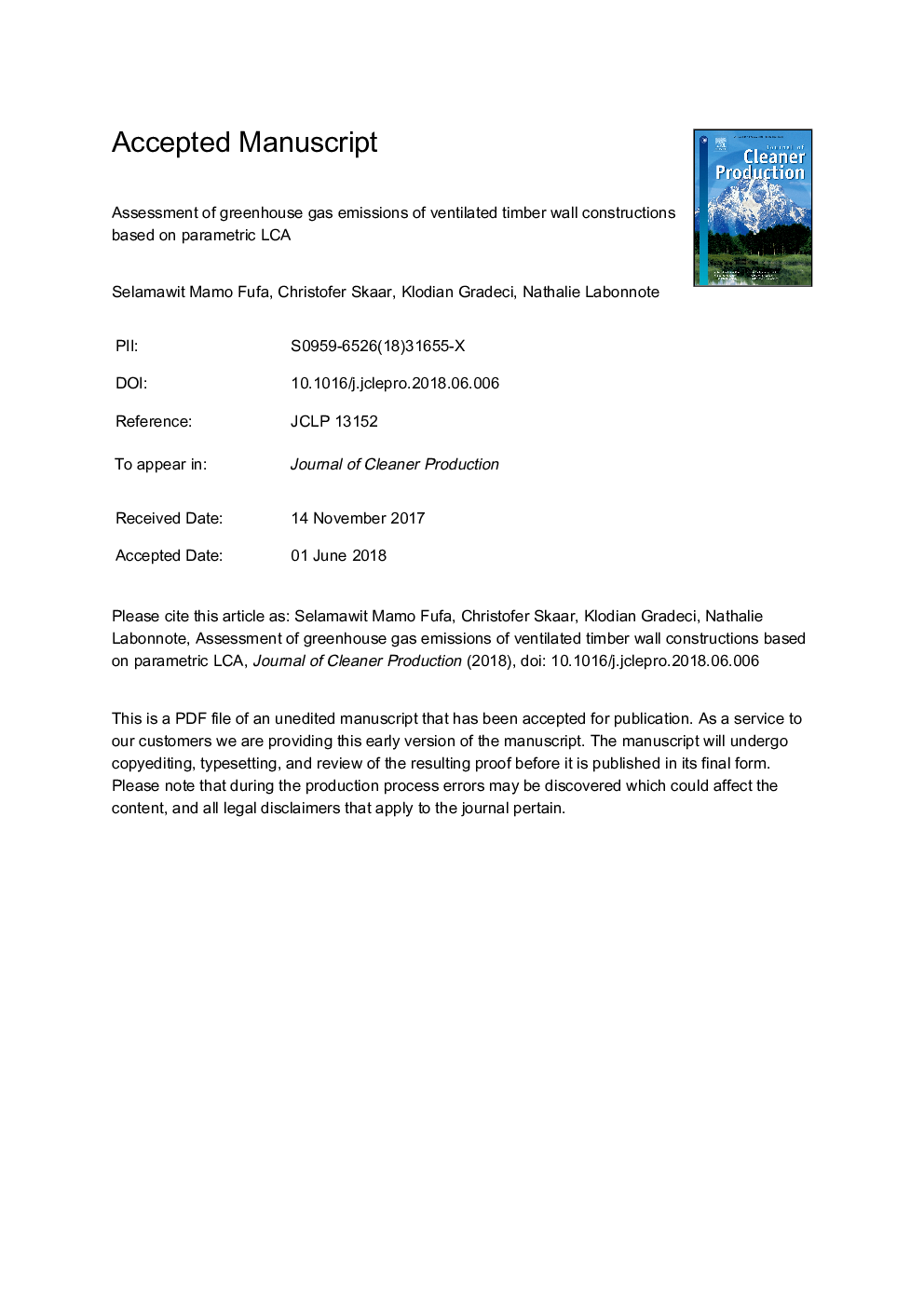| Article ID | Journal | Published Year | Pages | File Type |
|---|---|---|---|---|
| 8093697 | Journal of Cleaner Production | 2018 | 29 Pages |
Abstract
The results show that GHG emissions increase with increase of the number of windows, the damaged area and the increase in the number of replaced layers. This is due to the additional GHG emissions from the materials used to replace the damaged layers. The probability of failure is sensitive to the defined unacceptable level of mould growth. This affects the risk assessment, where the perturbation derived from the different probabilities of failure for different layers are observed at the corresponding replacement interval. The results also show that the parametric results are sensitive to the variables used to estimate the area of replacement, the number of windows, the number of damaged layers and the considered failure event. This study can be used to evaluate and minimize the potential GHG emission of possible moisture damages scenarios on building envelopes. Furthermore, it can enable to consider various improvement measures that reduce the risk, resulting in a robust construction with good function, longer service life and lower embodied emissions during the building's life time. The study also highlights the need for further analysis of the assumptions and background data used when developing the parametric tool.
Related Topics
Physical Sciences and Engineering
Energy
Renewable Energy, Sustainability and the Environment
Authors
Selamawit Mamo Fufa, Christofer Skaar, Klodian Gradeci, Nathalie Labonnote,
